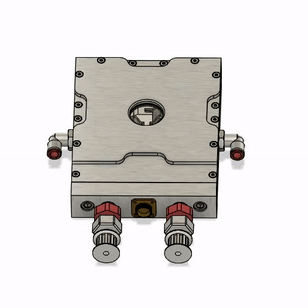
Objective
The project is aimed at the design and study of novel quantum sensory devices and nanomaterials for express-analysis of complex molecular systems, investigation and improvement of their performance, testing materials upon exposure to various complex gas mixtures and liquid media followed by data analysis and recommendation for the product development and commercialization. The proposed quantum sensor detectors are portable devices which could be basic elements of a simple and inexpensive technology relevant for defence against Chemical, Biological, Radiological, and Nuclear agents and Explosives (CBRNE) as well as addressing Counter-Terrorism and Environmental Security issues.
The project is based on the application of Yanson point-contact spectroscopy and point-contact gas-sensitive effect to sensor technique. The distinctive feature of the project is the proposed know-how and original areas in sensorics which have no analogues in the world. This will ensure development of innovative quantum technologies operating at the cutting edge of the detection limit of sensitive devices. Among the new areas in sensorics proposed by the project’s authors in the last two years one should note i) the point-contact method for spectral analysis of complex gas mixtures which does not require detection of separate components and ii) the quantum detection in gases and liquid media that resulted from the discovery by the project’s authors of the cyclic electrochemical switchover effect revealing a new method for controlling the quantized growth of dendritic nanoscale point contacts and introduction of the concept of point-contact nanostructured elongated element for modeling monitoring processes occurring at the atomic level.

The method and technology proposed is based on the characterization of the energy of interaction of point-contact structures with gas and liquid media through quantum conductivity parameters of point contacts. Due to quantum nature of their electric properties point contacts are able to record minute-fine variations of superficial states of the point contact conductivity channel which are caused by adsorption of an external agent. The registration procedure is performed with the highest possible resolution of one conductivity quantum which is equal to addition of one atom to the point-contact channel. As a result, quantum point-contact sensors operate with the highest sensitivity and at the cutting edge of detection limit of sensitive devices. The quantum approach gives a wide choice for development of the unlimited spectrum of novel methods and devices because knowledge of the energy parameters of any physical system is a key factor for determination and prognosis of its properties. Energy parameters of point-contact sensor response allow distinguishing materials one from another or analyzing complex gas mixture through its profile without determination of separate components of the gas medium. The achievability of the quantum point-contact detector operation is demonstrated by recent publications of the project authors in high-ranked journals and the new results presented in the project.
As a result of the project implementation experimental samples of point-contact quantum sensors will be assembled, their working parameters investigated, and the sensors’ operational characteristics tested. The created quantum detectors are planned to be a basic element of a simple and inexpensive technology for successful control of CBRNE agents, defence against terrorism, and prediction of climate change and environmental monitoring as well as performing a global multi-position impact monitoring of the environment to quickly detect areas of chemical pollution in potentially dangerous regions of intense anthropogenic influence.
Project
of the NATO SPS Programme
«Selective quantum sensor for detection of CBRN agents
Executive editor: V.Gudymenko
© 2020-2022
Last updated: 12/12/2023
in gas and liquid media»

